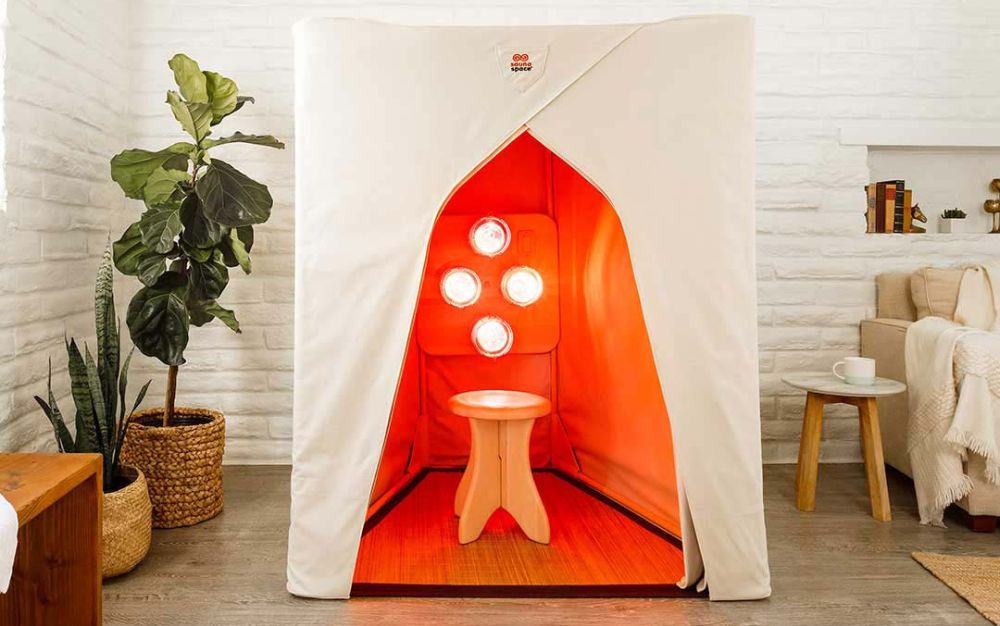Introduction
Welcome to Beyondfitwell.com, where we are dedicated to providing you with comprehensive guides and information to help you optimize your health and well-being. In this detailed article, we will guide you step-by-step on how to effectively use the CVS Health Thermometer. Whether you are a first-time user or simply need a refresher, we have you covered. Our goal is to empower you with the knowledge and confidence needed to accurately measure your body temperature using the CVS Health Thermometer, ensuring precise readings that can aid in monitoring your health. So, let’s begin this journey together!
But before we delve into the specifics of using the thermometer, let’s take a moment to understand the importance of monitoring body temperature and why the CVS Health Thermometer is a reliable choice.
Body temperature is a crucial indicator of overall health, as it can provide valuable insights into the presence of an infection or illness. Regularly monitoring your body temperature allows you to stay proactive about your health and seek appropriate medical attention if necessary.
CVS Health Thermometer is chosen by many individuals and healthcare professionals due to its accuracy, ease of use, and reliability. The thermometer is available in various types, including oral, ear, forehead, and no-touch thermometers. Each type offers unique advantages and can be selected based on personal preference and specific needs.
Now, let’s explore the step-by-step process of using the CVS Health Thermometer for each type available, ensuring you are well-informed and equipped to measure your temperature accurately.
Understanding Your CVS Health Thermometer
Types of CVS Health Thermometers
Before we begin, let’s familiarize ourselves with the various types of CVS Health Thermometers available. CVS offers a range of options to suit different needs and preferences. The most common types include:
- Oral Thermometers
- Ear Thermometers
- Forehead Thermometers
- No-Touch Thermometers
Each type of thermometer functions slightly differently, so it’s essential to choose the one that best suits your needs.
Preparing Your CVS Health Thermometer
Now that you’ve selected the appropriate thermometer, let’s ensure it is ready for use. Here are a few simple steps to prepare your CVS Health Thermometer:
- Remove the thermometer from its packaging.
- Inspect the device for any visible damage or defects.
- Read the instruction manual thoroughly to familiarize yourself with its specific features and usage.
- Ensure that the thermometer is clean and free from any dust or debris.
- If necessary, insert fresh batteries or charge the device according to the manufacturer’s instructions.
Using Your CVS Health Thermometer
Oral Thermometer
The oral thermometer is one of the most commonly used thermometers for measuring body temperature. Here’s how you can use it correctly:
- Wash your hands thoroughly with soap and water.
- Place the thermometer probe under your tongue, towards the back of your mouth.
- Closing your lips gently, hold the thermometer in place for the recommended duration (usually around 30 seconds).
- Once the reading is complete, carefully remove the thermometer from your mouth.
- Read the displayed temperature on the screen.
- Record the temperature, if necessary, for future reference or to share with a healthcare professional.
Ear Thermometer
The ear thermometer offers a quick and non-invasive method for measuring body temperature. Follow these steps for accurate results:
- Gently remove the probe cover if present.
- Ensure that the probe is clean and free from any debris.
- Turn on the thermometer and position it close to your ear.
- Insert the probe gently into your ear canal, following the manufacturer’s guidelines.
- Press the appropriate button to initiate the temperature reading.
- Wait for the thermometer to display the temperature measurement.
- Take note of the temperature and turn off the thermometer to save battery life.
Forehead Thermometer
The forehead thermometer provides a convenient and hygienic way of measuring body temperature. Here’s how to use it:
- Ensure that your forehead is clean, dry, and free from any moisture or perspiration.
- Remove any accessories, such as headbands or hats, that may interfere with the temperature reading.
- Hold the thermometer with the sensor surface facing the center of your forehead.
- Gently glide the thermometer across your forehead, maintaining contact with the skin.
- Follow the manufacturer’s instructions to ensure the correct scanning distance and duration.
- Wait for the thermometer to display the temperature reading.
- Take note of the measurement and power off the thermometer when finished.
No-Touch Thermometer
With a no-touch thermometer, you can conveniently measure body temperature without direct contact. Here’s how to use it effectively:
- Remove any protective caps or covers from the sensor.
- Make sure the thermometer is clean and free from any obstructions.
- Hold the thermometer close to the forehead, about 1-2 inches away.
- Press and hold the measurement button, ensuring proper alignment with the forehead surface.
- Keep the thermometer steady while it scans the temperature.
- Wait for the reading to appear on the screen and then release the button.
- Record the temperature and turn off the thermometer to conserve battery life.
Tips for Accurate Temperature Readings
Proper Technique
Using the CVS Health Thermometer correctly is crucial for obtaining precise temperature readings. Here are a few tips to ensure accurate results:
- Follow the manufacturer’s instructions carefully for each specific thermometer type.
- Choose a suitable measurement site based on the thermometer type (e.g., oral, ear, forehead).
- Take multiple readings to confirm consistency and accuracy.
- Wait for the thermometer to stabilize before recording the temperature.
Maintaining Hygiene
When using any thermometer, it is important to maintain proper hygiene practices to prevent the spread of germs:
- Regularly clean the thermometer probe according to the manufacturer’s instructions.
- If using disposable probe covers, replace them with each use.
- Wash your hands thoroughly before and after using the thermometer.
- Store the thermometer in a clean, dry, and safe location to prevent contamination.
Calibration and Accuracy
Regular calibration ensures the accuracy of your CVS Health Thermometer. Here’s what you need to keep in mind:
- Refer to the instruction manual to determine if your thermometer requires calibration.
- If calibration is necessary, follow the provided guidelines or consult a healthcare professional.
- Keep in mind that factors like environmental conditions and sensor maintenance can impact thermometer accuracy.
Seeking Medical Advice
Remember, a thermometer is a valuable tool for monitoring body temperature, but it does not replace professional medical advice. Consult a healthcare professional if you have concerns about your health or specific temperature readings.
Conclusion
Congratulations, Reader Beyondfitwell.com! You have now become an expert in effectively using the CVS Health Thermometer. This step-by-step guide has provided you with clarity and confidence in taking accurate temperature measurements. By following the proper technique and maintaining hygiene, you can ensure precise readings and monitor your health more effectively. Don’t forget the importance of seeking medical advice when necessary. Remember, your well-being is our priority. Stay healthy and keep monitoring your temperature with confidence!
Understanding Your CVS Health Thermometer
Types of CVS Health Thermometers
Before we begin, let’s familiarize ourselves with the various types of CVS Health Thermometers available. CVS offers a range of options to suit different needs and preferences, ensuring that you can find the thermometer that best suits your requirements. The most common types of CVS Health Thermometers include:
- Oral Thermometers
- Ear Thermometers
- Forehead Thermometers
- No-Touch Thermometers
Each type of thermometer functions slightly differently, catering to various measurement preferences and comfort levels. It’s important to understand the differences between these types to choose the one that will provide you with accurate temperature readings in a way that is comfortable and convenient for you.
Preparing Your CVS Health Thermometer
Now that you’ve selected the appropriate thermometer, let’s ensure it is ready for use. Here are a few simple steps to prepare your CVS Health Thermometer and optimize its performance:
- Remove the thermometer from its packaging carefully, making sure not to damage any components.
- Inspect the device for any visible damage or defects, as these may affect its accuracy and functionality.
- Take the time to read the instruction manual thoroughly. Familiarize yourself with the specific features, usage instructions, and any precautions provided by the manufacturer.
- Before using the thermometer, ensure that it is clean and free from any dust or debris. Wipe the probe gently with a clean cloth or use a recommended disinfectant wipe if necessary.
- If your thermometer requires batteries, make sure to insert fresh ones or charge the device according to the manufacturer’s instructions. This will ensure uninterrupted and reliable performance when you need it the most.
By following these preparation steps, you can guarantee that your CVS Health Thermometer is clean, functioning properly, and calibrated accurately to provide precise temperature readings. Taking the time to familiarize yourself with the various types of CVS Health Thermometers and properly preparing your chosen thermometer will help optimize your temperature monitoring experience.
Using Your CVS Health Thermometer
Oral Thermometer
The oral thermometer is one of the most commonly used thermometers for measuring body temperature. It is an effective and convenient option for accurate temperature readings. Follow these steps to use it correctly:
- Before you begin, ensure that you have thoroughly washed your hands with soap and water. This step is crucial to maintain cleanliness and prevent the spread of germs.
- Take the thermometer and place the probe under your tongue, towards the back of your mouth. Make sure the probe is in full contact with the sublingual area.
- Gently close your lips to hold the thermometer in place. It is important to keep your mouth closed during the measurement process to prevent inaccurate readings.
- Hold the thermometer in place for the recommended duration, which is usually around 30 seconds. This duration allows the thermometer to accurately measure your body temperature.
- After the recommended time has elapsed, carefully remove the thermometer from your mouth. Ensure that you do not touch the probe with your fingers, as it may affect the accuracy of the temperature reading.
- Observe the temperature displayed on the screen or digital display of the thermometer. Make a note of the reading for future reference or share it with a healthcare professional if necessary.
Ear Thermometer
The ear thermometer is known for its quick and non-invasive method of measuring body temperature. It provides accurate readings when used correctly. Follow these steps:
- If a probe cover is present on the thermometer, gently remove it before starting the measurement process.
- Before inserting the thermometer into your ear, ensure that the probe is clean and free from any debris or earwax. Cleaning the probe helps maintain accuracy during temperature readings.
- Turn on the thermometer and position it close to your ear. Make sure the sensor end of the thermometer is facing towards your ear canal.
- Gently insert the probe into your ear canal following the manufacturer’s guidelines. It is essential to follow the instructions to maintain accuracy.
- After inserting the probe, press the appropriate button on the thermometer to initiate the temperature reading process.
- Wait for the thermometer to display the temperature measurement. The reading should be visible on the screen or digital display of the thermometer within a few seconds.
- Take note of the temperature displayed and switch off the thermometer to conserve battery life.
Forehead Thermometer
The forehead thermometer offers a convenient and hygienic way to measure body temperature. Here’s how to use it properly:
- Before beginning the measurement, make sure your forehead is clean, dry, and free from any moisture or perspiration. This ensures accurate temperature readings.
- Remove any accessories that may interfere with the temperature reading, such as headbands or hats. Clear the forehead area for an unobstructed measurement.
- Hold the thermometer with the sensor surface facing the center of your forehead. Keep a firm grip on the thermometer to ensure stability during the measurement process.
- Gently glide the thermometer across your forehead, maintaining contact with the skin. Follow the manufacturer’s instructions regarding the scanning distance and duration for accuracy.
- Wait for the thermometer to display the temperature reading. It should appear on the screen or digital display within a few seconds.
- Take note of the measurement and remember to power off the thermometer once you have finished using it. This helps conserve the battery life of the device.
No-Touch Thermometer
A no-touch thermometer provides a convenient and contactless method of measuring body temperature. Here’s how to use it effectively:
- Before starting the measurement, remove any protective caps or covers from the sensor. Ensure that the sensor area is clean and free from any obstructions.
- Hold the thermometer close to the forehead, keeping it about 1-2 inches away from the skin’s surface.
- Press and hold the measurement button, ensuring proper alignment of the thermometer with the forehead’s surface. This ensures accurate and reliable temperature readings.
- Keep the thermometer steady while it scans the temperature. Avoid any unnecessary movements that may affect the accuracy of the reading.
- Wait for the temperature reading to appear on the screen or digital display of the thermometer. Once the reading is visible, release the measurement button.
- Make a note of the temperature for future reference or to share with healthcare professionals if required. Remember to turn off the thermometer to conserve battery life after use.
By following these simple steps, you can confidently and effectively use your CVS Health Thermometer to measure body temperature accurately. Remember to choose the appropriate thermometer based on your needs and preferences. Whether it is the oral, ear, forehead, or no-touch thermometer, always prioritize proper technique, hygiene, and seek medical advice when necessary. Stay healthy and ensure accurate temperature monitoring with your CVS Health Thermometer.
If you want to learn more about health-related topics, you can check out our category on health. There, you can find information about different health products.
Tips for Accurate Temperature Readings
Proper Technique for Precise Readings
Using the CVS Health Thermometer correctly is crucial for obtaining precise temperature readings. Following proper technique ensures accurate results. Here are a few tips to help you achieve accurate temperature measurements:
- Always carefully read and follow the manufacturer’s instructions for your specific CVS Health Thermometer model. Each type of thermometer may have different usage guidelines, and understanding the specific instructions will help you obtain the most accurate readings.
- Choose the appropriate measurement site based on the thermometer type you are using. For example, if you are using an oral thermometer, place the probe under your tongue towards the back of your mouth. If you are using an ear thermometer, gently insert the probe into your ear canal following the manufacturer’s guidelines. For forehead thermometers, ensure your forehead is clean, dry, and free from any moisture or perspiration, and then glide the thermometer across the center of your forehead while maintaining contact with the skin.
- To ensure accuracy, it is recommended to take multiple readings. This helps confirm consistency and accuracy, especially if you are monitoring your temperature for medical reasons. Take note of the readings and compare them to identify any discrepancies.
- Wait for the thermometer to stabilize before recording the temperature. This allows the thermometer to adjust to the surrounding environment and provide a more accurate measurement. Stabilization times can vary depending on the thermometer type, so refer to the instruction manual for guidance.
Maintaining Hygiene for Reliable Results
Maintaining proper hygiene practices is essential when using any thermometer. This helps prevent the spread of germs and ensures reliable temperature readings. Here are some hygiene tips to follow:
- Regularly clean the thermometer probe according to the manufacturer’s instructions. Use a gentle cleaning solution or wipe recommended by the manufacturer to clean the probe thoroughly after each use. This helps remove any residual debris or contaminants that may affect accuracy.
- If your thermometer uses disposable probe covers, replace them with each use. This not only helps maintain hygiene but also prevents cross-contamination between users.
- Before and after using the thermometer, wash your hands thoroughly with soap and water. This helps remove any germs or bacteria on your hands that may come into contact with the thermometer and affect the accuracy of the readings.
- Store the thermometer in a clean, dry, and safe location to prevent contamination. Ensure that the thermometer is protected from dust, moisture, and extreme temperatures that may interfere with its functionality.
Calibration and Accuracy Maintenance
Regular calibration ensures the accuracy of your CVS Health Thermometer. Here’s what you need to keep in mind:
- Refer to the instruction manual to determine if your thermometer requires calibration. Some thermometers may require periodic calibration to maintain accurate readings. Follow the provided guidelines or consult a healthcare professional if calibration is necessary.
- While calibrating your thermometer, it is important to consider factors that may affect its accuracy, such as environmental conditions and sensor maintenance. Extreme temperatures, exposure to moisture, or improper handling can impact the thermometer’s performance. Regularly check for any signs of damage or wear that may influence its accuracy.
Seeking Medical Advice for Professional Guidance
A thermometer is a valuable tool for monitoring body temperature. However, it is essential to understand its limitations. A thermometer cannot replace professional medical advice. If you have concerns about your health, specific temperature readings, or if you are experiencing symptoms, it is always advisable to consult a healthcare professional. They will be able to provide accurate diagnosis and guidance based on a comprehensive assessment.
By following proper technique, maintaining hygiene, calibrating when necessary, and seeking medical advice when needed, you can enhance the accuracy of your CVS Health Thermometer readings. Remember, accurate temperature measurements are vital for monitoring health and making informed decisions. Stay proactive in your temperature monitoring journey and prioritize your well-being!
Conclusion: Mastering Temperature Monitoring
Dear Beyondfitwell.com Readers, we applaud your commitment to learning how to use the CVS Health Thermometer effectively. With this comprehensive guide, we trust that you now possess the knowledge and skills to take precise temperature measurements with confidence and accuracy.
By following the step-by-step instructions provided in this article, you have equipped yourself with the essential techniques for using the oral, ear, forehead, or no-touch thermometer. Regardless of the type you choose, the golden rule remains the same: prioritize proper technique, maintain hygiene, and seek professional medical advice when necessary.
Accurate temperature readings are vital for monitoring your health and the well-being of your loved ones. The CVS Health Thermometer, when utilized correctly, becomes an indispensable tool in assessing body temperature. Remember that temperature can serve as an indicator of various health conditions, such as infections, inflammations, or hormonal imbalances.
To enhance the reliability and credibility of your temperature readings, incorporate the following tips into your monitoring routine:
Consistency is Key
When monitoring temperature, consistency is crucial. By taking multiple readings at different times of the day, you can confirm the accuracy and consistency of your measurements. This practice is especially important when tracking fever or other persistent symptoms.
Document and Share
Recording your temperature readings is highly recommended, as it provides crucial information for healthcare professionals when assessing your overall health condition. Maintain a temperature log to track any fluctuations or changes over time, and don’t hesitate to share this information with your doctor or other healthcare providers.
Interpreting Temperature Readings
Keep in mind that temperature readings must be interpreted within the context of your overall health. While a high temperature can indicate an underlying health issue, it is essential to consider other symptoms, such as headaches, body aches, chills, or respiratory distress. Understanding the relationship between temperature and symptoms will help you make informed decisions regarding your health.
Beyond Temperature
Remember that temperature monitoring is just one aspect of maintaining your overall well-being. While it provides valuable data, it should not replace a comprehensive approach to healthcare. Continue to practice good hygiene, eat a balanced diet, engage in regular physical activity, and prioritize your mental and emotional well-being.
Moreover, always seek professional medical advice when in doubt or if you experience alarming symptoms. Your doctor or healthcare provider is the best resource for analyzing your temperature readings and guiding you toward the most appropriate course of action.
Conclusion: Empowered for Optimal Health
Congratulations on completing this comprehensive guide on how to use the CVS Health Thermometer effectively! Your dedication to learning and implementing the proper techniques demonstrates your commitment to optimal health and well-being.
Armed with the knowledge and skills acquired throughout this article, you are now prepared to confidently monitor your body temperature. Remember to prioritize proper technique, maintain hygiene, and consult medical professionals when necessary. By integrating these practices into your daily routine, you can ensure accurate results and take proactive steps toward safeguarding your health.
We hope this expanded guide has provided you with the clarity and information needed to master temperature monitoring. Your commitment to your health is commendable, and we encourage you to share this valuable knowledge with others to promote a healthier and safer community.
From all of us at Beyondfitwell.com, we wish you a healthy and fulfilling journey as you continue to prioritize your well-being!





